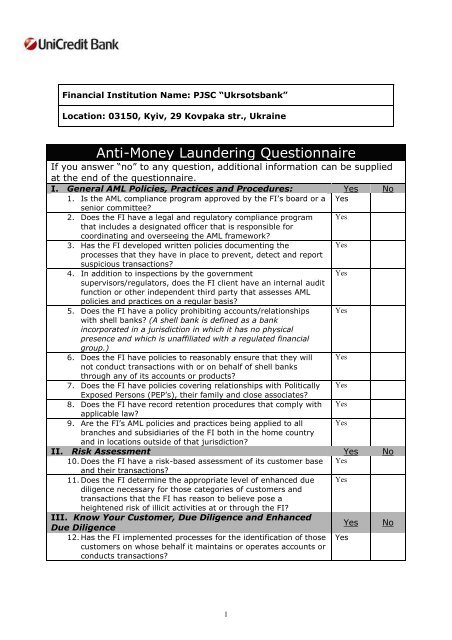Your Is cdd and kyc the same images are available. Is cdd and kyc the same are a topic that is being searched for and liked by netizens now. You can Find and Download the Is cdd and kyc the same files here. Find and Download all free photos.
If you’re searching for is cdd and kyc the same pictures information linked to the is cdd and kyc the same topic, you have pay a visit to the ideal blog. Our website frequently provides you with suggestions for seeking the highest quality video and picture content, please kindly search and locate more enlightening video content and images that match your interests.
Is Cdd And Kyc The Same. Customer due diligence CDD is at the heart of Anti-Money Laundering AML and Know Your Customer KYC initiatives and is designed to help banks and financial institutions verify if customers are who they say they are confirm theyre not on any prohibited lists and assess their risk factors. Click here for more details. More importantly KYC and CDD are fundamental practices to protect the organisation from fraud and losses resulting from illegal funds and. KYC and CDD are similar but there are some differences.
 Customer Due Diligence The Safety Measures Explained Poster Design Gaming Logos Customer From pinterest.com
Customer Due Diligence The Safety Measures Explained Poster Design Gaming Logos Customer From pinterest.com
The difference between AML and KYC is that AML anti-money laundering is an umbrella term for the range of regulatory processes firms must have in place whereas KYC Know Your Customer is a component part of AML that consists of firms verifying their customers identity. Customer Due Diligence is an integral part of your KYC but it is not the same as KYC. The first allows the business to create a customers risk profile by retrieving its data before starting a business relationship. Customer OnBoarding is a process by which a customer establishes a relationship with the financial institution and provides all of the necessary information for the bank to open an account digitally. Click here for more details. In fact KYC sometimes referred to as Customer Due Diligence CDD is a critical component of AML programs.
Customer Due Diligence CDD the basic process of verifying customer identity and Enhanced Due Diligence EDD which is a more advanced KYC procedure that is used primarily for high-risk customers.
When are they used. This way the KYC information you gather allows you to evaluate the risk profiles of every customer. As mentioned before AML on the other hand is a much larger broader concept that consists of the following. More importantly KYC and CDD are fundamental practices to protect the organisation from fraud and losses resulting from illegal funds and. CDD is essential for KYC and although these processes differ around the globe they have a single aimto identify your customer and their activities. For regulated entities the KYC checks that sufficed in the past have now developed into CDD programmes and the main difference between KYC and CDD apart from the emphasis on the source of funds is that the CDD.
 Source: pinterest.com
Source: pinterest.com
Is there any difference between CDD and KYC. CDD is essential for KYC and although these processes differ around the globe they have a single aimto identify your customer and their activities. Then customers risk profile is assessed and followed by basic Customer Due Diligence Enhanced Due Diligence EDD or Simplified Due Diligence. Customer Due Diligence is an ongoing control of suspicious activity aimed at laundering the proceeds of crime. Know Your Customer or KYC is the essential part of the CDD process involving customer verification through photo ID email or phone number etc.
 Source: pinterest.com
Source: pinterest.com
KYC checks are done at the first stage of establishing business relations when we vet the potential clientele. This includes UBO Identification and verification from a risk-based approach applicant business profile and business type to be included in the risk assessment process. KYC checks are done at the first stage of establishing business relations when we vet the potential clientele. CDD is essential for KYC and although these processes differ around the globe they have a single aimto identify your customer and their activities. This way the KYC information you gather allows you to evaluate the risk profiles of every customer.
 Source: pinterest.com
Source: pinterest.com
A Customer Due Diligence CDD is actually part of KYC because KYC is the due diligence that financial institutions and other regulated companies must perform in order to identify their clients and ascertain relevant information pertinent to identify their clients and ascertain relevant information pertinent to doing financial business with them. For regulated entities the KYC checks that sufficed in the past have now developed into CDD programmes and the main difference between KYC and CDD apart from the emphasis on the source of funds is that the CDD. KYCCDD refers to standards set forth by the Financial Crimes Enforcement Network FinCEN for customer identification and if you are running a cryptocurrency business you need to develop policy and procedures to comply with these standards by law. In practice Customer Due Diligence CDD and Know Your Customer KYC are often regarded as similar processes. Know Your Customer or KYC is the essential part of the CDD process involving customer verification through photo ID email or phone number etc.
 Source: pinterest.com
Source: pinterest.com
This includes UBO Identification and verification from a risk-based approach applicant business profile and business type to be included in the risk assessment process. The first allows the business to create a customers risk profile by retrieving its data before starting a business relationship. This way the KYC information you gather allows you to evaluate the risk profiles of every customer. Customer Due Diligence is a form of a know your customer inventory in the literal sense of the word. For regulated entities the KYC checks that sufficed in the past have now developed into CDD programmes and the main difference between KYC and CDD apart from the emphasis on the source of funds is that the CDD.
 Source: pinterest.com
Source: pinterest.com
Click here for more details. For most compliance officers however the term KYC refers to the CIP phase of AML onboarding. Customer Due Diligence is an ongoing control of suspicious activity aimed at laundering the proceeds of crime. Click here for more details. Conversely the CDD states that the information provided by them is correct or incorrect.
 Source: pinterest.com
Source: pinterest.com
For most compliance officers however the term KYC refers to the CIP phase of AML onboarding. Customer OnBoarding is a process by which a customer establishes a relationship with the financial institution and provides all of the necessary information for the bank to open an account digitally. CIP involves gathering information. KYC is the greater process and CDD comes within in. In fact KYC sometimes referred to as Customer Due Diligence CDD is a critical component of AML programs.
 Source: pinterest.com
Source: pinterest.com
This way the KYC information you gather allows you to evaluate the risk profiles of every customer. A Customer Due Diligence CDD is actually part of KYC because KYC is the due diligence that financial institutions and other regulated companies must perform in order to identify their clients and ascertain relevant information pertinent to identify their clients and ascertain relevant information pertinent to doing financial business with them. Know your customer KYC and anti-money laundering AML are often viewed as either similar or one and the same. This includes UBO Identification and verification from a risk-based approach applicant business profile and business type to be included in the risk assessment process. KYC and CDD are similar but there are some differences.
 Source: pinterest.com
Source: pinterest.com
What Customer Due Diligence and Know Your Customer have in common is the extensive compulsory. Customer identification includes any acceptable document that establishes the customer as a citizen or beneficiary of civic benefits and his proof of address. Conversely the CDD states that the information provided by them is correct or incorrect. As part of the CDD documents related to Know Your Customer KYC are obtained to establish customer identity. Know your customer KYC and anti-money laundering AML are often viewed as either similar or one and the same.
 Source: pinterest.com
Source: pinterest.com
Know Your Customer KYC and Customer Due Diligence CDD are some of the most vital requirements in these regulations. Conversely the CDD states that the information provided by them is correct or incorrect. However this is not entirely correct. Customer OnBoarding is a process by which a customer establishes a relationship with the financial institution and provides all of the necessary information for the bank to open an account digitally. A Customer Due Diligence CDD is actually part of KYC because KYC is the due diligence that financial institutions and other regulated companies must perform in order to identify their clients and ascertain relevant information pertinent to identify their clients and ascertain relevant information pertinent to doing financial business with them.
 Source: pinterest.com
Source: pinterest.com
CDD customer due diligence on the other hand is the second phase of the overall AML process. Financial institutions need to know their customers and protect their financial ecosystems against criminals terrorists and politically exposed persons PEPs who might present added risk. In practice Customer Due Diligence CDD and Know Your Customer KYC are often regarded as similar processes. CDD customer due diligence on the other hand is the second phase of the overall AML process. KYCCDD refers to standards set forth by the Financial Crimes Enforcement Network FinCEN for customer identification and if you are running a cryptocurrency business you need to develop policy and procedures to comply with these standards by law.
 Source: pinterest.com
Source: pinterest.com
KYC and CDD are similar but there are some differences. Todays topic is Know Your CustomerCustomer Due Diligence KYCCDD. However KYC workflows in banking fintech and other kinds of online transactions involve much. For most compliance officers however the term KYC refers to the CIP phase of AML onboarding. Customer Due Diligence CDD the basic process of verifying customer identity and Enhanced Due Diligence EDD which is a more advanced KYC procedure that is used primarily for high-risk customers.
 Source: pinterest.com
Source: pinterest.com
KYC and CDD are similar but there are some differences. This includes UBO Identification and verification from a risk-based approach applicant business profile and business type to be included in the risk assessment process. However this is not entirely correct. Customer Due Diligence CDD the basic process of verifying customer identity and Enhanced Due Diligence EDD which is a more advanced KYC procedure that is used primarily for high-risk customers. What Customer Due Diligence and Know Your Customer have in common is the extensive compulsory.
 Source: pinterest.com
Source: pinterest.com
For most compliance officers however the term KYC refers to the CIP phase of AML onboarding. Customer Due Diligence is an ongoing control of suspicious activity aimed at laundering the proceeds of crime. More importantly KYC and CDD are fundamental practices to protect the organisation from fraud and losses resulting from illegal funds and. When are they used. Customer due diligence CDD is at the heart of Anti-Money Laundering AML and Know Your Customer KYC initiatives and is designed to help banks and financial institutions verify if customers are who they say they are confirm theyre not on.
This site is an open community for users to submit their favorite wallpapers on the internet, all images or pictures in this website are for personal wallpaper use only, it is stricly prohibited to use this wallpaper for commercial purposes, if you are the author and find this image is shared without your permission, please kindly raise a DMCA report to Us.
If you find this site adventageous, please support us by sharing this posts to your preference social media accounts like Facebook, Instagram and so on or you can also bookmark this blog page with the title is cdd and kyc the same by using Ctrl + D for devices a laptop with a Windows operating system or Command + D for laptops with an Apple operating system. If you use a smartphone, you can also use the drawer menu of the browser you are using. Whether it’s a Windows, Mac, iOS or Android operating system, you will still be able to bookmark this website.






